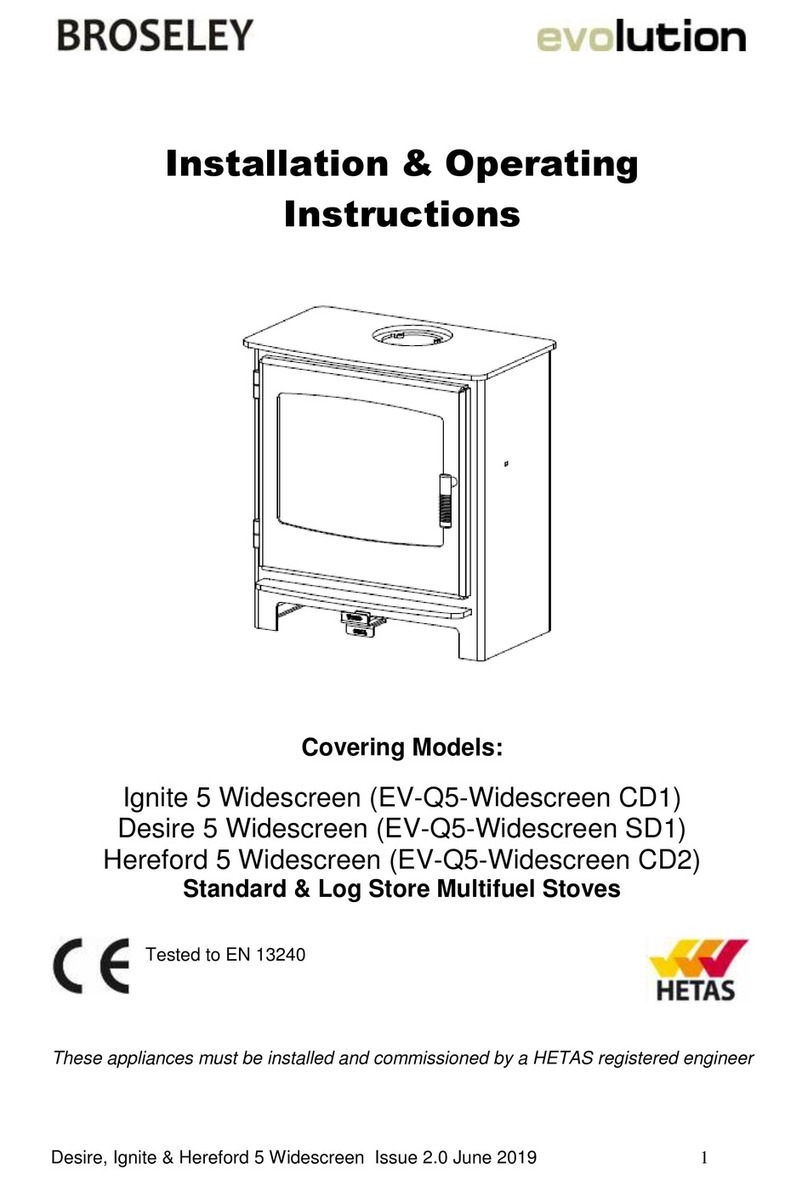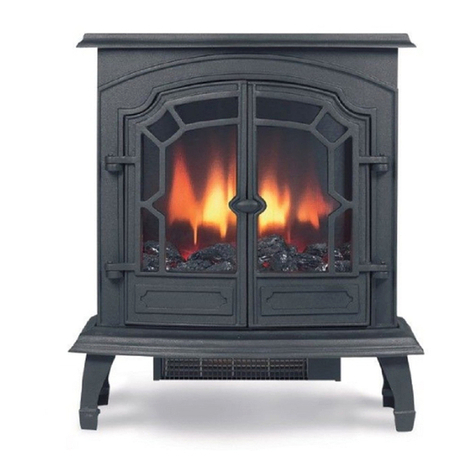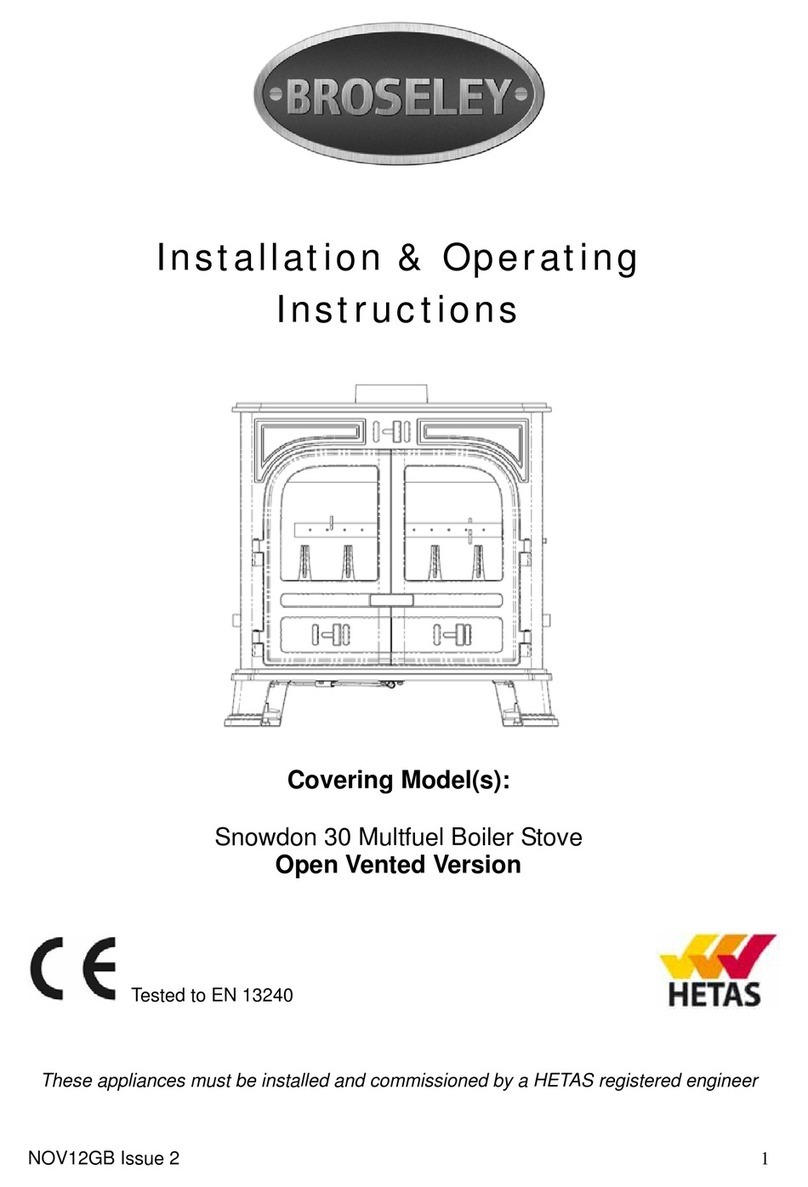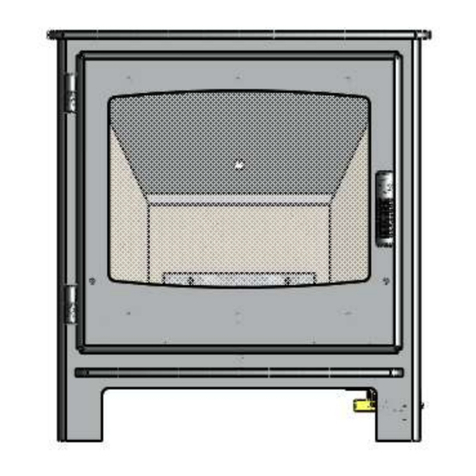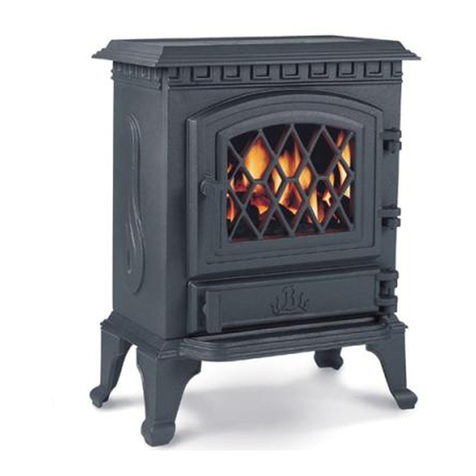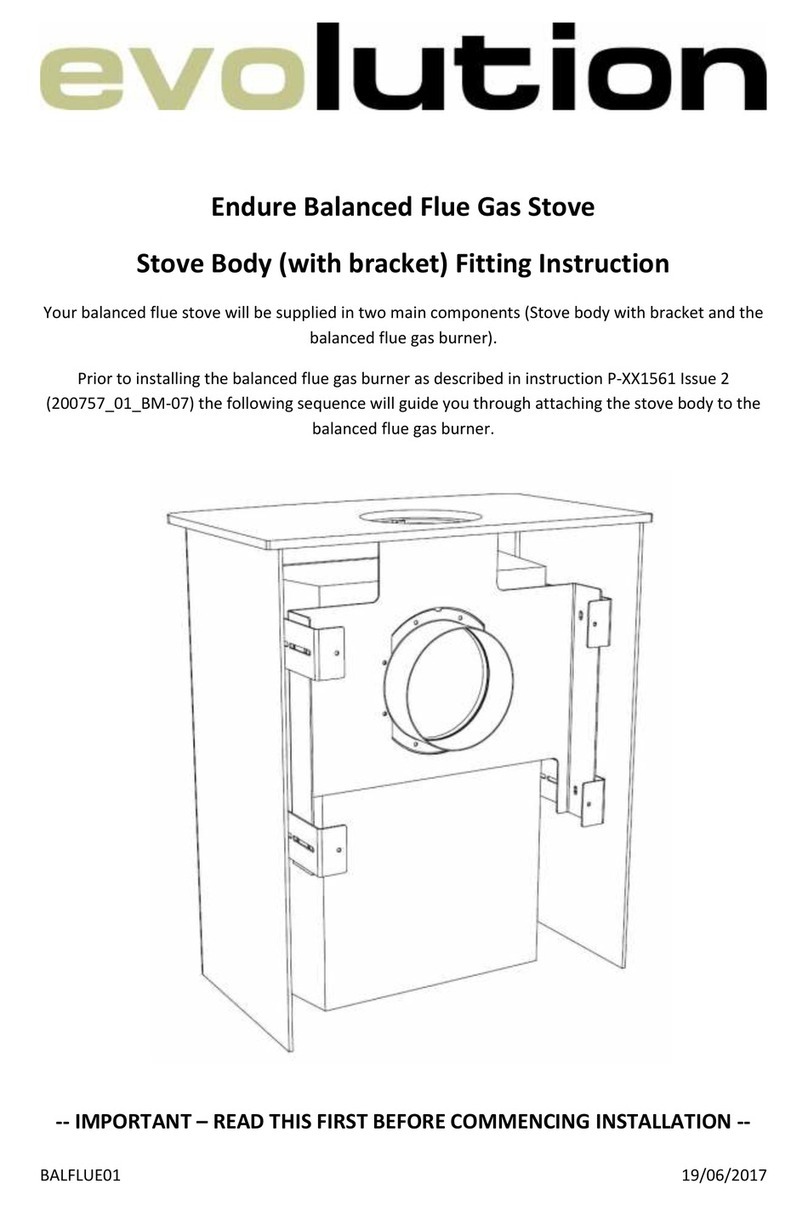1
WINCHESTER MULTIFUEL
WINCHESTER MULTIFUELWINCHESTER MULTIFUEL
WINCHESTER MULTIFUEL STOVE
STOVE STOVE
STOVE
INSTALLATION AND OPERATION MANUAL
INSTALLATION AND OPERATION MANUALINSTALLATION AND OPERATION MANUAL
INSTALLATION AND OPERATION MANUAL
Thank You
May we take this opportunity to thank you for choosing a Winchester, cast iron
Multi-fuel stove. Please take time to read this manual and follow the guidelines on
how to install and operate your new stove, as we feel sure it will enable you to use it
to its best advantage for many years.
The term “Multi-fuel” means that the stove is capable of burning a variety of solid
fuels – e.g. Wood, Coal, Anthracite, Phurnacite and various preformed Briquettes or a
mixture of these. The Multifuel grate inside the stove allows a flow of air through the
base of the fire. This is necessary when burning coal. See the section on ‘Starting and
maintaining the fire’ for more details.
Installation
The detailed provisions in this document are intended to provide guidance for the
more common situations. Alternative ways may be appropriate in other
circumstances. Building regulations must be followed. It is essential that a
“Declaration of Completion” certificate is obtained by the end user for the
installation, failure to do so may void the warranty of the appliance.
1. We recommend that you seek the services of an installer who is conversant
with stove installations and Building Regulations. It is most likely that the
shop where you purchased the stove will be able to help in this respect. It is
our general policy to supply specialist Fireplace shops. These shops can offer
an after sales service and will be able to offer advice when necessary.
2. It is most important that there is no obstruction in the flue or chimney. Please
ensure that the flue is checked and swept before any installation. A flue
draught of minimum 1.5mm to a maximum 2.5mm water gauge is required for
satisfactory appliance performance. The flue draught should be checked under
fire at high output and if it exceeds the recommended maximum, a draught
stabiliser must be fitted so that the rate of burning can be controlled, and to
prevent over firing. If you have any doubts about the suitability of your
chimney, consult your local dealer/stockist.
3. Ventilation is essential for the combustion process. It may be necessary to
install a wall vent to provide combustion air and prevent the depletion of
oxygen in the room. This need is more prevalent in modern houses where
drafts have been almost eliminated by double glazing etc. Our gas models
have an oxygen depletion sensor, this switches off the gas supply to the stove
if the oxygen content in the room falls below the desired level. This is not
possible with a multi-fuel stove.
4. Your stove must be installed on a non-combustible hearth and with a gap of at
least 600mm from any combustible material. In front of the stove, to carpets or
wooden floors there must be 300mm of hearth. It is possible that on opening
the door of the stove for a log or coal to fall out. A fender must be fitted if the
hearth is flush with the carpet.
